Five uncrewed boats remotely piloted from 500 miles away surrounded HMS Tyne during a three-day demonstration off the Scottish coast, marking what the Royal Navy called a milestone in its move toward a Hybrid Navy of crewed and uncrewed platforms.
The exercise, conducted by the Navy’s Disruptive Capabilities and Technology Office (DCTO) and the Fleet Experimentation Squadron (FXS), simulated the escort of a warship using a flotilla of 7.2-metre autonomous Rattler vessels.
The uncrewed boats were controlled from Patrick Blackett, moored in Portsmouth, while operating in Scottish waters in coordination with HMS Tyne, HMS Stirling Castle, HMS Biter and a Merlin helicopter.
Five uncrewed boats, remotely piloted from over 500 miles away, surrounded HMS Tyne in a major Royal Navy trial off Scotland, a key step toward a Hybrid Fleet of crewed and uncrewed vessels working together at sea. pic.twitter.com/avobMmoGmn
— UK Defence Journal (@UKDefJournal) November 1, 2025
Live data, video and sensor feeds were transmitted to controllers aboard Patrick Blackett, allowing the Rattlers to perform escort and surveillance tasks in real time. The Royal Navy said the demonstration was the culmination of months of trials, showing how uncrewed surface vessels could work alongside traditional ships in future operations.
The project was developed in collaboration with a consortium of small and medium-sized companies. Military personnel were directly involved in the design and testing process to ensure the boats met operational requirements, according to the Navy. Built on rigid inflatable boat hulls, the Rattlers are fitted with autonomy systems and modular payloads that can be tailored for missions such as reconnaissance, surveillance and payload delivery.
Each boat is controlled by a two-person team using a portable “plug and play” laptop system. The vessels can operate independently or as a swarm, following pre-programmed mission profiles or, in time, functioning autonomously without direct human control.
Commander Michael Hutchinson, who leads the Fleet Experimentation Squadron and commands Patrick Blackett, said in the press release that “this is a really important moment for the Royal Navy as we progress towards a Hybrid Navy of crewed and uncrewed platforms.”
He added that the uncrewed surface vessels had been “built and developed at pace, in a ground-breaking way, alongside a coalition of fantastic local companies.” Hutchinson described the project as “the most exciting of my career,” adding that the platforms would operate both in support of existing warships and as a capability in their own right.
“In recent years we have seen the effect that autonomy and uncrewed systems can have at sea, on land and in the air, especially in Ukraine,” he said. “In the maritime domain the effect has been remarkable, with simple, cheap, one-way effectors used to defeat complex and capable warships and deny them freedom of manoeuvre at sea.”
He noted that uncrewed surface vessels are also being used for reconnaissance, patrol and survey operations, making it “critical that the Navy develop these systems and train people with the skills to operate them.”
Brigadier Jaimie Roylance, the Royal Navy’s Chief Technology Officer, said in the press release that “this is an important moment in the history of the Royal Navy.” He called it “the first time we have been able to field a capable, mission-ready, deployable uncrewed system at sea” and the “first major success for the DCTO.”
Roylance praised the work of the FXS, Coastal Forces Squadron, Royal Marines and Army personnel, saying their efforts to develop the systems and training “have been astonishing and completed in record time.” He added that while more development lies ahead, “the wider consortium of SMEs we are working with are up to the task.”






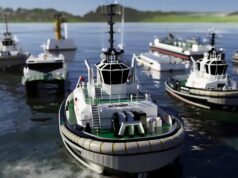


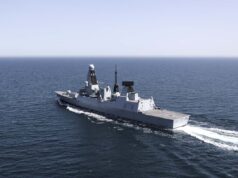

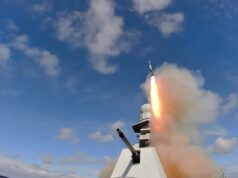
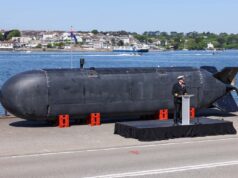
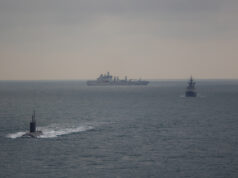
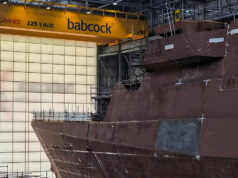

Are they on giffgaff?
Jamming?
I wonder whether they’d buy new RHIBS for this or just use ships existing RHIBS and call it an increase?
Plenty of small RHIBs piling up each day, low miles, 100 previous owners, maybe we can use them ?
I’m not sure what you call those inflatable things but they are most definitely not RHIBs.. I suppose you could cut them up and use them to cover silage.. but I would not even give them the boat title..disposable inflatable raft maybe 🤔
Sorry Jonathan I forgot my place !
Yes back in your cardboard box, you can come back out on Tuesday next week for some bread and water.. but only if your good.
3 small boats is now a Swarm ?
‘Five uncrewed boats’
I can see 3 in the main pic plus Stirling Castle and Biter.
Assume the other two aren’t in the picture.
Then I’ll assume the other 100 that would constitute a “Swarm” are not in the picture too.
Oh, we don’t disagree about calling 3 or 5 a swarm – just about what an article actually said. We have an excellent couple of examples on the world stage of people who are – shall we say – a bit confused when it comes to being accurate.
OK cool, thanks for explaining and taking all that trouble to underscore the error of my accuracy.
Next time I see a picture of 5 boats/ships/toys I’ll make sure not to comment so quickly after the article was published and maybe do my research as to authenticity of the source and accuracy of the numbers involved.
Good to see you agree with my “Swarm” observation/comment though, It was the main reason why I bothered to comment after all.
Yes. Take a look at the attacks against Russian naval vessels in Ukraine, where vessels are being sunk or crippled by group of five or six USVs. You don’t need that many.
But a Swarm ?
Swarm, “A large or dense group of”
Don’t you just love exageration, I must have seen this word used a Billion times !
I assume the current military use of the word ‘swarm’ is that the various components can coordinate actions with each other, independently of the external control.
Spear 3 is for example a swarming missile even though all of MBDA’s graphics show salvoes of 4, because they can communicate with each other to avoid double tapping or to aim for weak points in a target.
Jeesus christ,
.
Wish I never bothered now.
OK Chaps, It’s a Swarm, a big fat mass of boats completly blocking out the Sun just like a swarm of Locusts or a swarm of Bees.
I’m not sure why you would have a escort set of drones controlling hundreds of miles away.. I would imagine the best solution would be a container based control room you can bolt to any deck of a ship being escorted..
What this proves (?) is that a billion pound frigate could be taken out for a tuppeny bit!
No, it doesnt
Umh, I think you’ll find it does. Nothing is impossible. I did use the Word “could” and I stand by that.
They’re well defended, a rhib isn’t going to get anywhere close, it’s not a dysfunctional Russian frigate
…and the Titanic was unsinkable. Tragically that was a disaster. We should not assume anything.
Surely that’s why they’re doing exercises like this; find out what’s lacking when it comes to defending against drones – air or sea-based – and work to improve it through whatever means.
If it were up to me I’d take some of the Ukrainian USV designs like SeaBaby, build them here and have them as assets for our navy; a combination of offensive weapons platforms for hitting enemy ships and defensive ones to engage enemy USVs.
I have no problem with the exercise. In fact it’s very sensible. I’m just making the point that an awful lot has changed. I repeat….drones “could” take out a larger ship.
And the carriers have not received the 30 mm guns, despite the danger of these drones.
If they get to the carrier we’ve royally screwed up. And the 30mm mounts are too high
I never thought about the amounts being too high.
The carriers definitely need sea scepter though.
They’re certainly never get sea ceptor, no where for it
There is
No, there isn’t, not without strapping a steel box on somewhere
It’s already been worked out. It just requires 1SL to pull his head out and order it so.
You’re just pulling this out of your ass without any articles or statements to back it up
They’ll get 40mm Mk4 mounts
And where has that been stated
No new fits of 30mm guns on RN warships
The Type 26 are literally getting 30mm
Nope
And your information to the contrary?
Only the T23 was found to have insufficient arcs to fit a 40mm mount.
Riddle me this, why work out the gun arcs for ships that ‘won’t get the 40mm’.
The Carriers have no 30mm mounts and there are plenty spare
40mm Mk 4 will allow RFAs and OPVs in particular to be substantially upgunned at little extra cost and move us away from phalanx.
30mm is done, see the idea to uprate the mounts with Martlet, no point, 40mm Mk 4 is a far better solution and can replace all the myriad small calibre guns across the entire fleet massively simplifying training and logistics
This sounds like you want them to use 40mm not that there has been any orders or even ambition to fit them. As of yet we have only purchased 10 for the T31, if any more were coming anytime soon they would’ve been ordered especially with T26 ship 1 fitting out
Nope, show me any RN concept out there fitted with anything other than 57mm or 40mm Bofors, both systems stated as the future fit for all RN warships.
The RN has show zero interest in acquiring 30mm airburst solutions to counter UAS threats.
You’re referring to future projects, not ones in production now.
You show me any orders or Royal Navy concepts of the T26 with 40mm
More click bait headlines. Surely title should ack training or trials etc….Wolf…wolf….wolf
The type 26 are literally getting 30mm
I reckon you, Spock and Grinch went to the same school ! 😁👀
Was replying to someone else
Yup, I was reading your comments.
Very entertaining.